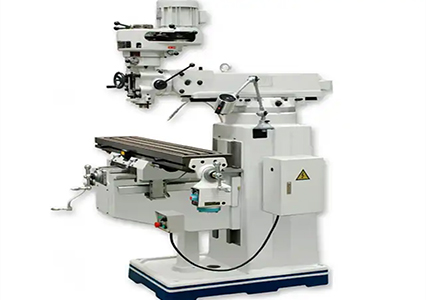Innovation Leads the Trend, Quality Drives Value
Milling machines are indispensable tools in a variety of industries, from metalworking to manufacturing. Used for shaping solid materials like metal and wood, these machines offer precision and versatility. Understanding their types and functions can significantly enhance your operation's efficiency. In this guide, we’ll explore the key types of milling machines: turret milling machines, universal milling machines, horizontal milling machines, and vertical milling machines.

Turret milling machines, like those from the renowned brand Shanquan, are highly versatile. The principal feature of a turret mill is its ability to move the table perpendicularly and parallel to the spindle axis. This flexibility allows for a range of complex tasks to be accomplished with a single machine. A turret milling machine is ideal for small to medium-sized parts, often found in many tool rooms and workshops.
Functions and Applications
- Precision Work: The movable turret head makes it easy to perform intricate and detailed work.
- Versatility: Suitable for drilling, cutting, and boring tasks.
- Ease of Use: User-friendly and adaptable, making it an excellent choice for both beginners and experienced machinists.
Universal milling machines stand out for their ability to handle complex shapes and compound angles. Shanquan's universal milling machines are designed for heavy-duty tasks, offering a swivel table that can be positioned at various angles. This function is instrumental in creating precision gears and cutting spline shafts.
Functions and Applications
- Complex Machining: Ideal for manufacturing large and intricate components.
- Swiveling Table: Enhances the machinist’s ability to perform diverse operations.
- High Capacity: Suitable for industrial applications where durability and reliability are paramount.
Horizontal and vertical milling machines are fundamental to any milling task. Each has its advantages, and understanding their specific functions can help you choose the right one for your needs.
Horizontal milling machines have a horizontal axis spindle, which allows for the milling of larger surfaces. Shanquan’ s horizontal milling machines are designed to handle heavy jobs and are frequently used in the production of gears and slots.
Functions and Applications
- Heavy Cutting: Ideal for tasks requiring significant material removal.
- Versatility: Suitable for cutting slots, gears, and other heavy-duty projects.
- Efficiency: The horizontal setup allows for the accommodation of larger, heavier workpieces.
Vertical milling machines have a vertical axis spindle that holds the cutting tool. Shanquan’s vertical milling machines are appreciated for their simplicity and accuracy, making them popular in both small job shops and large industrial plants.
Functions and Applications
- Precision Machining: Perfect for tasks requiring high accuracy.
- Ease of Setup: The vertical orientation simplifies the setup process and makes the alignment straightforward.
- Versatility: Suitable for drilling, plunge cuts, and die-sinking.
Understanding the various kinds of milling machines, from the versatile turret milling machine to the adaptable universal milling machine, and the specialized horizontal and vertical milling machines, can significantly enhance your workshop’s capabilities. Shanquan, a trusted name in milling machinery, offers high-quality options across all these categories, ensuring reliable performance and durability. Choose the right milling machine from Shanquan to meet your specific needs and take your machining tasks to the next level.